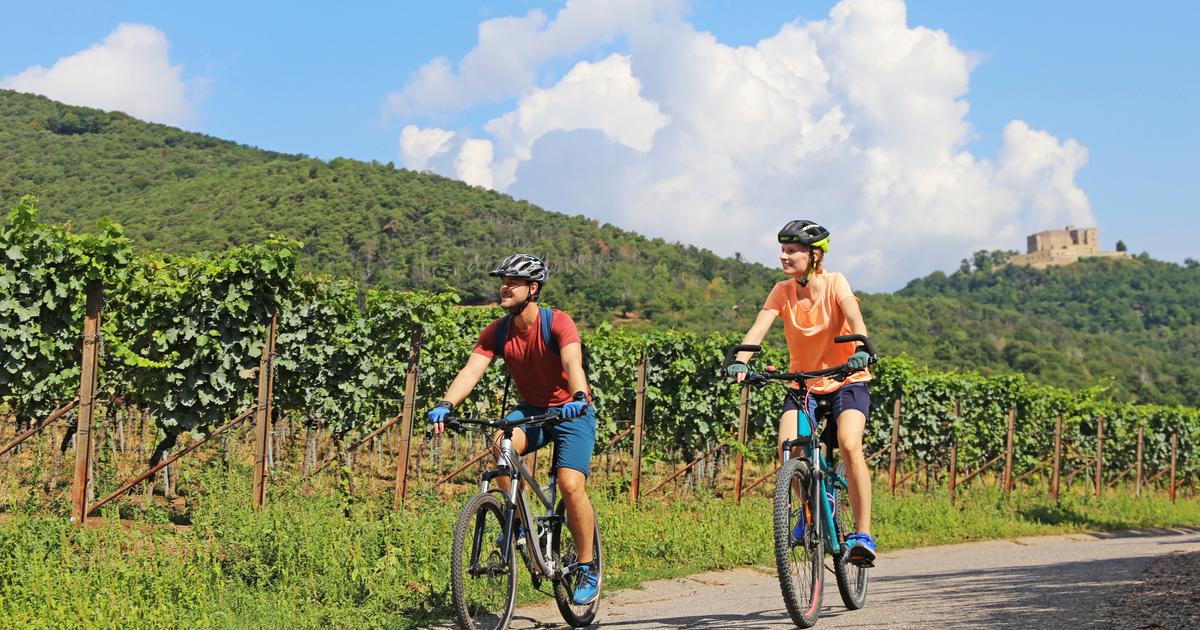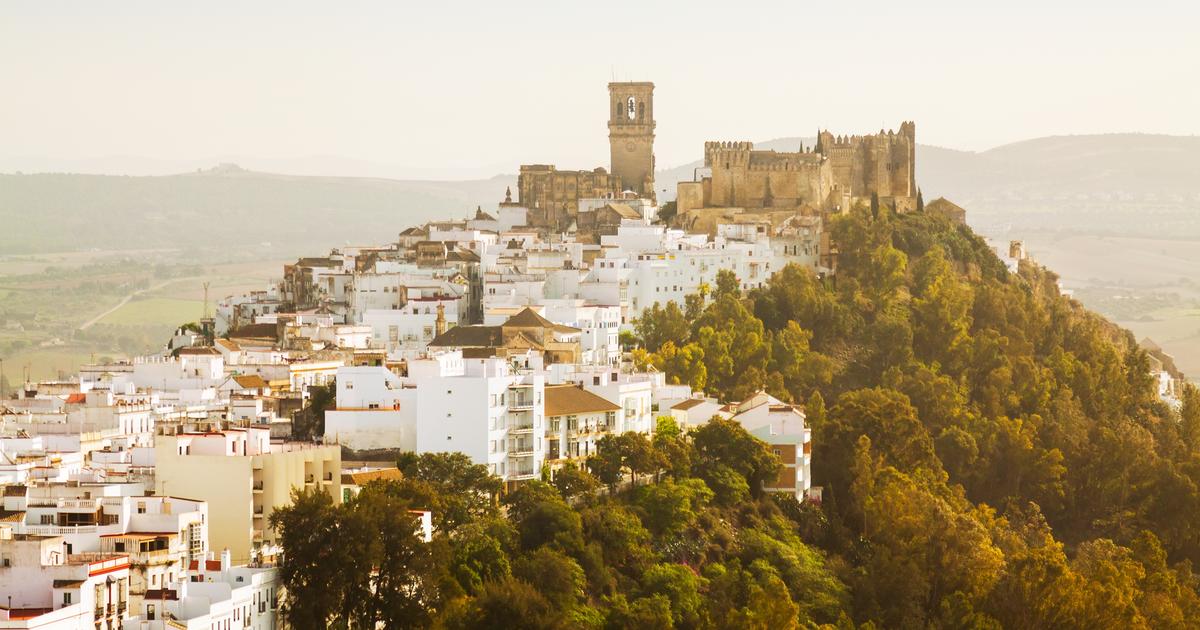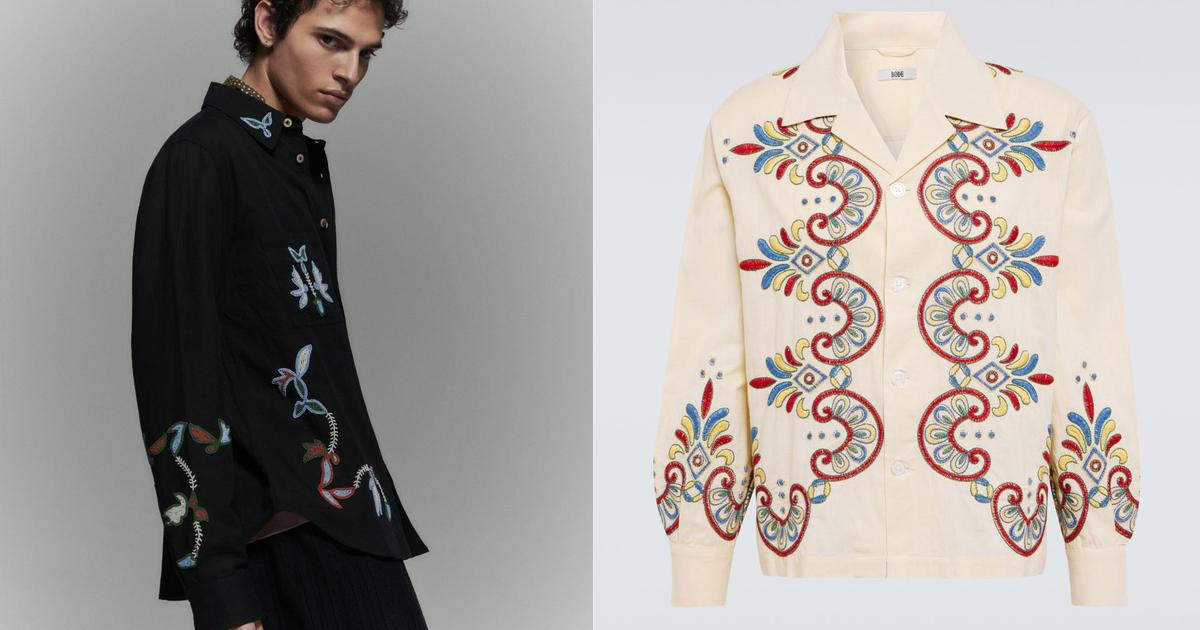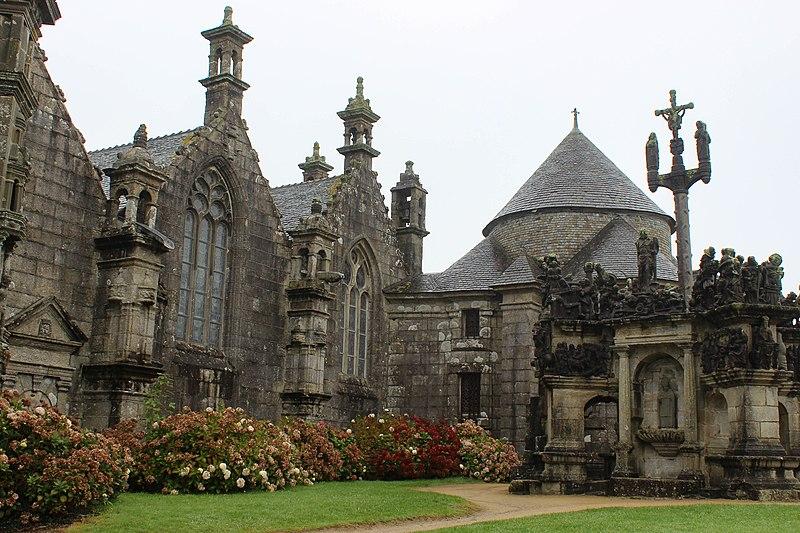The visitor is always surprised by the number of fortified cities, fortified castles, manors, military works - from feudal mottes to the most complex defensive systems - that he encounters on Breton lands.
A testimony to the bubbling relationships that the region maintained for centuries with France and England, but also of the wars of succession with the duchy and the economic prosperity of the peninsula between the 14th and 17th centuries.
Façades with severe military rigor, Gothic granite lacework, formal gardens, dungeons and moats, courtyards and loopholes… Everything is there, even the appearances of ghosts in the dark corridors!
From the gates of Upper Brittany to the borders of Morbihan, braving storms or dominating the countryside, they deeply mark the Armorican landscape ... and the spirits.
The 10 most beautiful natural sites in Brittany
The castle of Fougères (Ille-et-Vilaine)
Lawrence of Arabia wrote, when he visited the Château de Fougères in 1907: "
There is no more beautiful exterior, I am sure
".
CRTB / Yannick Le Gall
Occupying a two-hectare rocky promontory, it is one of the most imposing fortified castles in Europe - it is also one of the best preserved.
Worthy of a swashbuckling novel, it was first built in wood, destroyed by the King of England in 1166, then rebuilt in stone.
Its architecture was constantly improved over the centuries to make it a real warship, ready for siege.
The scenic route is very lively, and many thematic events and exhibitions (“Murder Party” for Halloween, introduction to archaeological excavations, etc.) take place all year round.
Château de Fougères (tel .: 02 99 99 79 59, place Pierre Symon in Fougères, adult rate € 9 / child € 5, free audio guide, free or guided visit.)
The castle of Vitré (Ille-et-Vilaine)
Transformed into a prison in the 19th century, the Château de Vitré underwent a period of restoration after its classification in 1872 as a Historic Monument.
CRTB / Emmanuel Berthier
In the Middle Ages, Vitré was part of the "Marches de Bretagne", a defensive line extending from Mont St Michel to Nantes, between the Duchy of Brittany and the Frankish kingdom.
The small cobbled streets steeped in history lead to the castle, built in the heart of this merchant city, once surrounded by ramparts and ditches.
Redesigned and enlarged until the 16th century, this remarkable defensive complex, which is accessed by a drawbridge, hosted the Parliament of Brittany during the plague epidemics.
The towers house a fascinating museum of the castle, which recreates its interior decorations from different periods;
the guided tour of the exterior of the fortress tells about its various military and then residential developments.
Château de Vitré (tel: 02 99 75 04 54, 5 place du Château in Vitré, adult rate € 6 / child € 4.)
Combourg castle (Ille-et-Vilaine)
It is nestled in a 25 hectare wooded park that the Château de Combourg is located.
CRTB / Yannick Le Gall
If you have read the
Memoirs from beyond the grave
by Breton François-René de Chateaubriand, you already know the very particular aura of this austere beauty castle, built between the 12th and 15th centuries, and which is said to be haunted. .
The romantic author spent part of his youth in this old fortress restored in 1876 in a neo-Gothic style, located halfway between Rennes and Saint-Malo;
his descendants still live there.
The guided and commented visit of the castle lasts an hour: you can notably see his work table, his armchair and the bed where he died.
Château de Combourg (tel: 02 99 73 22 95, 23 rue des Princes in Combourg, adult price 8.70 € / child from 4.70 €, visit to the park 3.70 €.)
The castle of Hunaudaye (Côtes d'Amor)
The Hunaudaye fortified castle was built around 1220 by Olivier Tournemine.
Côtes d'Armor Destination / Cédric Bossard
Built in the 14th century by the lords of Tournemire to protect the border with the country of Penthièvre (Lamballe) and that of the Poudouvre (Dinan), the ruins of this fortified castle with a tormented history (the Duke of Brittany François I murdered his brother, he was set on fire…) are a vibrant testimony to the Middle Ages.
Children love its drawbridge, its 5 circular towers, its curtain walls, its interior courtyard… As well as the medieval games created for them, and the format of the visit which is particularly suited to them.
It must be said that with its water moat and its rustic decor, it is very photogenic!
Château de la Hunaudaye (tel .: 02 96 34 82 10, Le Saint-Esprit-des-Bois in Plédéliac, adult price € 5.50 / child € 3.50.)
Fort La Latte (Côtes d'Armor)
Fort La Latte is also called “Château de la Roche Goyon”.
Côtes d'Armor Destination / Emmanuel Berthier
We can no longer count the films or clips that were shot there - the final fight of the
Vikings
with Kirk Douglas (1958) was filmed at the top of the dungeon of this iconic Breton castle all in pink sandstone, also called “Château de la Roche Goyon”. ".
Strategically dominating the emerald-colored waves at the tip of the Latte, very close to Cape Fréhel, it offers a magical journey back in time, and a spectacular setting.
Erected in the 14th century to protect the region from invaders, only the keep remained when it was looted and dismantled two centuries later, before being transformed into a coastal fort by Vauban.
In August, it hosts medieval merchants, chivalry tournaments, falconry ...
Fort La Latte (tel: 06 70 81 35 43, Plévenon Cap Fréhel, adult price 6.60 € / child 4.40 €.)
The castle of La Roche-Jagu (Côtes d'Armor)
The fortress is ideally visited at the end of the day.
Côtes d'Armor Destination / Emmanuel Berthier
A stone's throw from Tréguier, the historic capital of Trégor, stands this superb 15th-century castle.
Proudly overlooking the bucolic Trieux river from its steep left bank, the fortress is ideal for visiting at the end of the day, when the light of the setting sun illuminates the pink granite of the facades.
The view over the estuary and the valley is simply extraordinary, and the walk in the gardens of medieval inspiration, the rose garden, the palm grove or the alley of camellias, offers a feeling of total peace.
The domain welcomes artists in residence, who exhibit their works in the 64 hectare park (the visit is free, all year round).
Quality cultural programs in summer.
Château de la Roche-Jagu (tel: 02 96 95 62 35, Ploëzal, adult price € 6 / child € 4.)
Brest castle (Finistère)
On a rocky outcrop (on the banks of the Penfeld river and the Brest harbor where the Elorn flows), the castle overlooks the sea. CRTB / Emmanuel Berthier
In the heart of Brest, overlooking the military port of about thirty meters, it is one of the rare historical monuments of the city to have escaped the bombardments.
Built on a former Roman camp, its central position on the Atlantic coast allowed it to control the assaults of the Normans, then the movements of the English, who however occupied it during the Hundred Years War.
Reinforced by Vauban who developed his fortifications, it became a prison during the Revolution, then regained its military vocation under Napoleon ... Which makes it the oldest active military place in the world!
It now houses the fascinating National Maritime Museum.
From the ramparts, the view is exceptional.
Château de Brest (tel.: 02 98 22 12 39, Boulevard de la Marine in Brest, adult price € 7 / child € 5.50, audio guide included.)
The castle of Kerjean (Finistère)
The Château de Kerjean is the symbol of the Renaissance in Brittany.
CRTB / Erich Spiegelhalter
Symbol of the Renaissance in Brittany, it bears witness to the prosperity of the Leonardo region at the end of the 16th century.
This remarkable fortified ensemble, respecting the traditional plan of the Breton manors - several buildings surrounding a square courtyard - nevertheless displays ancient architectural influences.
Surpassing the most beautiful residences in the region (even the builders of churches and parish enclosures were inspired by it!), It was damaged during the Revolution, before regaining all its splendor after its restoration in 2005. Besides the large park, 25 rooms are open to visitors, from the galleries to the kitchen, including the stately bedroom or the chapel;
multimedia installations allow you to immerse yourself in the history of the castle.
Château de Kerjean (tel: 02 98 69 93 69, Saint-Vougay, adult price 5 € / child 1 €.)
Josselin castle (Morbihan)
With its three towers, the medieval facade of the Câteau de Josselin overlooking the river is worthy of a fairy tale.
CRTB Rafa Perez
Inland Morbihan is proud of beautiful towns full of character, of which Josselin is one.
Nestled in the valley of the Oust, by the river, its castle has always been the residence of the Dukes of Rohan.
The fortress built in the 11th century was dismantled following the clashes which opposed them to the Dukes of Brittany, then a second time by Richelieu when the Rohans rallied to Protestantism.
With its three towers, the medieval facade overlooking the river is worthy of a fairy tale;
facing the French garden, the interior facade displays a flamboyant Gothic style.
The visit of the richly furnished interiors reveals in particular many family portraits.
Château de Josselin (tel .: 02 97 22 36 45, place de la Congrégation in Josselin, adult rate € 10.50 / child € 5.50.)
Suscinio castle (Morbihan)
Suscinio was the residence of the Dukes of Brittany from the 13th to the 15th century.
CRTB Donatienne GUILLAUDEAU
Located 25 km south of Vannes, the Rhuys peninsula extends between the Gulf of Morbihan and the Atlantic Ocean.
Suscinio Castle is one of the wonders of this superb comma of land;
residence of the Dukes of Brittany from the 13th to the 15th century, it fascinates with its covered way, its towers, its ramparts and its drawbridge spanning the moat.
In the banquet hall or the apartments of the Duchess Anne of Brittany, one relives effortlessly the daily life of the Middle Ages.
Entertainment takes place all year round, and in summer a sound and light show retraces the history of the castle.
With its marshes, woods and thatched cottages, the natural park of 62 hectares which surrounds it is of any beauty.
Château de Suscinio (tel .: 02 97 41 91 91, route du Duc Jean V in Sarzeau, adult rate € 10.50 / child € 6.)
And if you want more ...
In
Finistère
, the Château du Taureau, at the entrance to the bay of Morlaix, is actually a fort, located in the open sea. Built in the 16th century and enlarged by Vauban, it is very beautiful and well deserving of attention. devote a few hours to it.
If you like to take a detour for a nice photo, the castle of Trecesson in
Morbihan
, that of Trévarez in
Finistère
, that of Bourbansais in
Ille-et-Vilaine
, or that of Tonquédec in the
Côtes d'Armor
, will know fill you up.
If you dream of getting married in a Breton castle, opt for that of Trédion in
Morbihan
, that of Montmuran in
Ille-et-Vilaine
, that of Hac in the
Côtes d'Armor
, or the manor of Kerhuel in
Finistère
.















